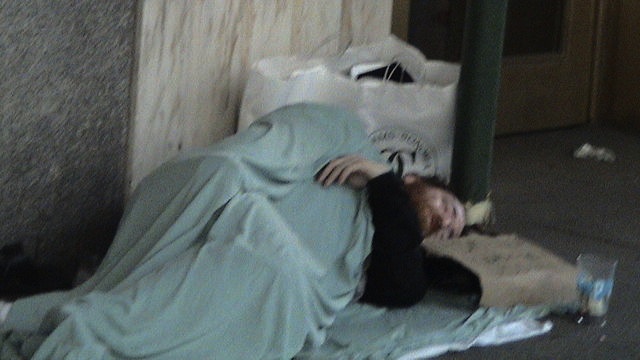Going Deep: Art and the Poetry of Elizabeth Bishop

When critic Randall Jarrell mentioned Vermeer in a review of Elizabeth Bishop’s poetry, Bishop excitedly expressed her joy over someone making the connection. We can only guess how she’d feel about Peggy Samuels’ Deep Skin: Elizabeth Bishop and Visual Art, in which the Drew University professor analyzes the influence of more modern artists such as Paul Klee, Kurt Schwitters, and Alexander Calder on Bishop’s poetry. “From the late-1930s through the mid-1950s, Bishop drew on visual art intently to work out her own aesthetic,” Samuels asserts. Like a great quarterback, Samuels huddles up these visual artists and the poet and explains how they team up to create a whole new understanding of surface and depth in images and words. Deep Skin goes deep, and scores.
“By placing Bishop’s concerns in conversation with the visual arts,” Samuels writes in the introduction, “we see painters’ experiments and the discourse about those experiments pulled through the reacting sensibility of a poet working on her own affective and aesthetic concerns.” Rather than slavishly “copy” artists’ works as poems, Bishop emulated their thought processes by adapting them to her poetry. Critics have long recognized the art connection in Bishop’s poetry, but Bishop’s poems and other writings on art (showing affection ranging from Rembrandt to Pollock) “seem to scatter, without any means of cohering,” Samuels suggests. Deep Skin brings that missing coherence to Bishop’s appropriation of modern art theory and reveals the method to her modern art madness.
Thanks to college roommate and MoMA curator Margaret Miller, Bishop gained an insider’s access to the newest European artists to hit American shores. When Paul Klee’s art gained favor, Bishop recognized the power of his paintings’ surfaces as an unstable boundary. Works such as Glance of a Landscape (shown above), with its layers of transparent and opaque watercolor, provided a visual example of the multilayered reality Bishop wanted to create in her poetic worlds. Just as Klee places a bodiless eye in Glance of a Landscape, Bishop inserts an “eye/‘I’” in a similar “fluid deep space” in poems such as “Pleasure Seas,” Samuels writes. Much like Emerson’s “Transparent Eyeball,” Bishop’s Klee-esque eyeball breaks through the surface of reality like breaking through the surface of water, which becomes the threshold open both “to nature and to the interior of the poet” in Samuels’ view.
When Miller first encountered the collages of Kurt Schwitters as a curator, she shared her “secret” with Bishop. In turn, Bishop saw the usefulness of Schwitters approach to collage for her poetry. In contrast to Cubist or Dada collage focusing on meaninglessness, Schwitters’ collages enhanced meaning through a layering of human experience. Schwitters ripped elements of a collage from their original context only to create a new context in the collage itself that allowed the elements to “lift off” into new strata of possibility. In “Cape Breton,” Bishop demonstrates a Schwitterean “fascination with surfaces,” Samuels believes, “the play of tactile materialities with different densities and opacities.” Where Schwitters worked in color and shapes to build new arrangements of meaning, Bishop worked in verbal images and connotations to versify a whole new world.
Unfortunately, Bishop’s fascination with Klee later led to an almost unraveling of meaning as she attempted to appropriate Klee’s idea of “walking with a line.” The seemingly endless lines of Klee’s drawings translated into lines of poetry only led to the chaos of works such as Bishop’s “Four Poems.” Fortunately, Calder’s mobiles provided an “antidote” to that chaos in Samuels’ view. Calder’s mobiles continued to allow the mobility and freedom Bishop sought, but in a convenient package protected against disintegration. In one unpublished poem, the “[s]peaker is held and carried as a moving element among gently ascending, descending, and circling shape motifs that, condensing and unfurling, poising their disparate weights and motions, carry the timbre of gentleness, accident, and pleasure,” Samuels concludes. In such beautifully sensitive and astute passages, Samuels shows her deep understanding of both the artists and the poet, giving each their due in a duet of aesthetic theory.
In Deep Skin, Samuels excels in choreographing this pas de deux of poetry and visual art. Just as Bishop borrowed from the visual arts to better her poetry, through Samuels’ eyes we can now return the favor and see Klee, Schwitters, and Calder afresh through a deeper understanding of how Bishop saw them. The subtlety of these borrowings and their manifestations in art and poetry can be hard to follow, but Samuels guides us ably with minimum reliance on tricks of literary criticism. All she requires is an openness to ideas along the lines of Bishop’s own openness. Bishop over and over used the image of water as a open boundary to be passed through to reach something on the other side. Deep Skin invites us to take a similar plunge and allow the play of ideas to wash over and refresh us.
[Many thanks to Cornell University Press for providing me with a review copy of Peggy Samuels’ Deep Skin: Elizabeth Bishop and Visual Art.]





